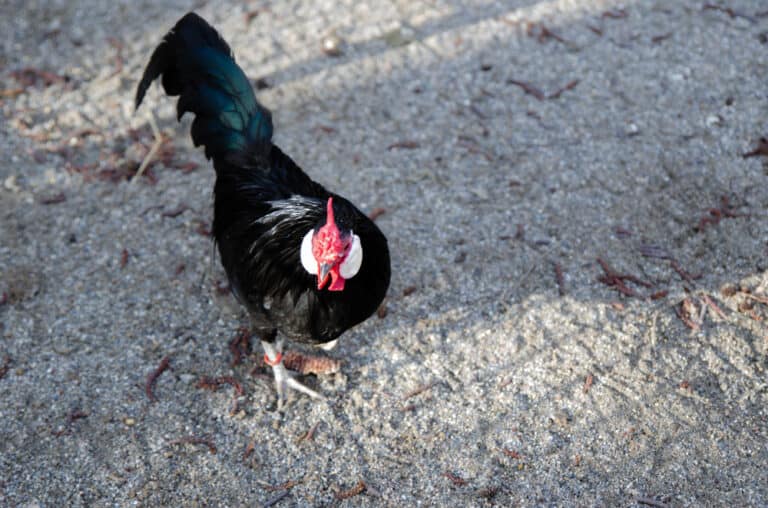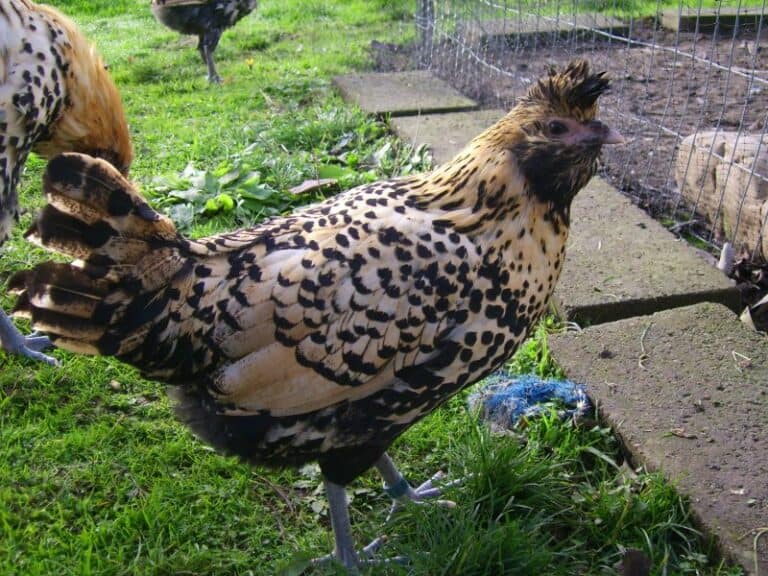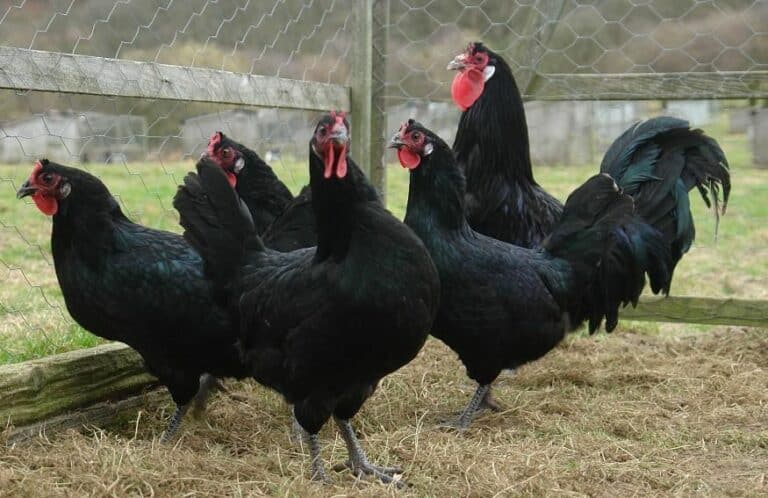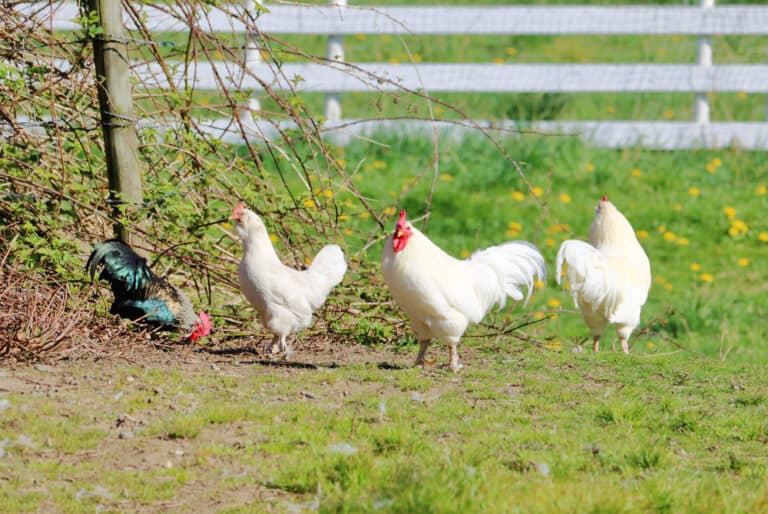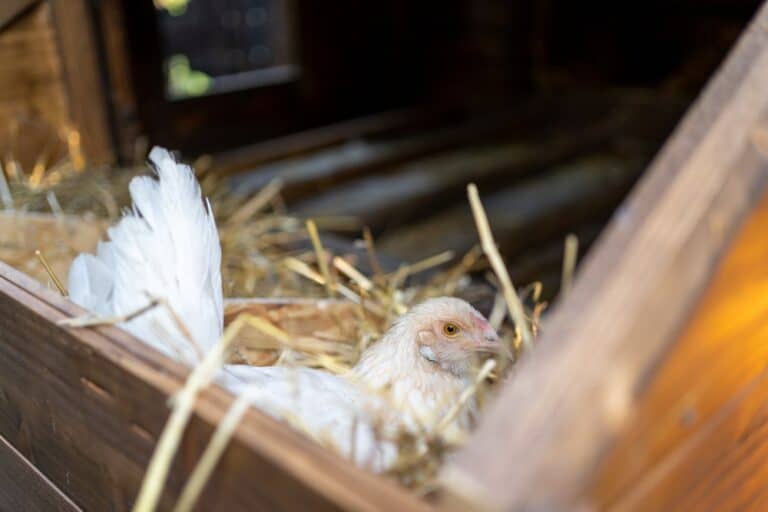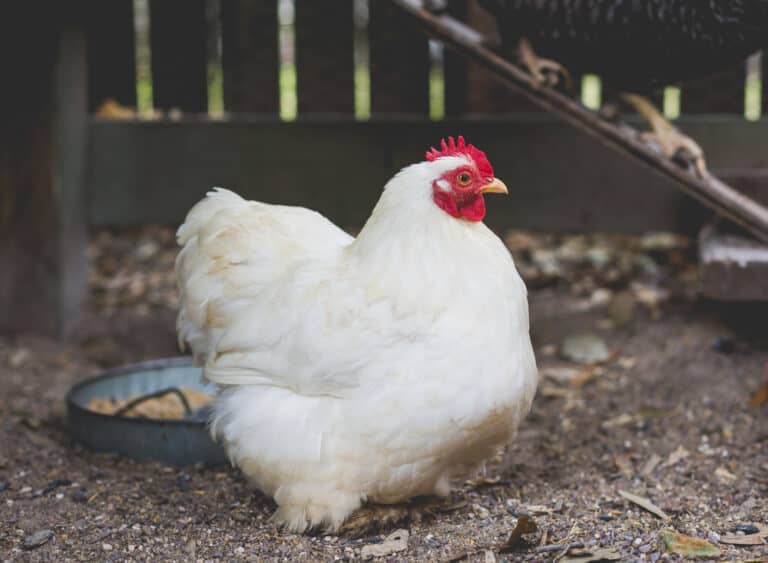The blue Andalusian chicken is not the most commonly seen bird in backyard chicken coops but that doesn’t mean it doesn’t deserve to be more popular. This gorgeous bird is a very good egg layer, it’s a joy to interact with, and it’s quite sturdy too.
As with any other poultry bird, however, there are some key points you need to be aware of if you want to be able to take care of this breed properly. So, below we’ll take a deeper look at what is the Andalusian chicken breed and all you need to know about it.
What is an Andalusian chicken, exactly?
As you might guess from the name, an Andalusian chicken is an interesting chicken breed that was developed in the province of Andalusia in Spain.
As one of the many Mediterranean breeds, the Andalusian chicken shares many of the traits of these birds but it also has quite a few unique features of its own. To understand what these are and how they came to be, let’s first look at the history of this peculiar Spanish chicken.
The Andalusian chicken first became known – at least widely so – to the breeders in England in the middle of the 19th century. More specifically, it was in 1846 that Leonard Barber brought some of these birds to London from Xeres de la Frontera which is just a couple dozen miles off of Cadiz in Andalusia.
A few years later, other breeders brought more of these birds to Cornwall, Devon, and other parts of the UK where Andalusian chickens started being developed into different variants of the original breed. That’s around the same time in the 1850s that the Andalusian chicken was brought to the US as well. From there, it was just a couple of decades until the American Poultry Association recognized the breed too.
But where did the original Andalusian chicken really come from? These birds aren’t considered a landrace so to say that they were just native to the region wouldn’t be exactly correct.
The actual landrace in that region is the Black Castillian chicken which is different from the Andalusian breed. It is speculated that the latter came from crosses of Black Castillians with other landrace Spanish chickens but it’s not clear whether that’s the case and, if so, which breeds were used.
Still, this is the most likely theory, especially given that the Andalusian breed looks very similar to the classic Spanish chicken, just about a pound smaller than it. As we know, the Spanish chicken was produced by mixing several landrace chicken breeds so the same is likely true for the Andalusian chicken.
Once this beautiful bird got exported out of Spain, however, breeders in England, the US, and elsewhere developed quite a few other variants of this bird – we’ll mention some of the more popular ones below.
What does an Andalusian chicken look like?
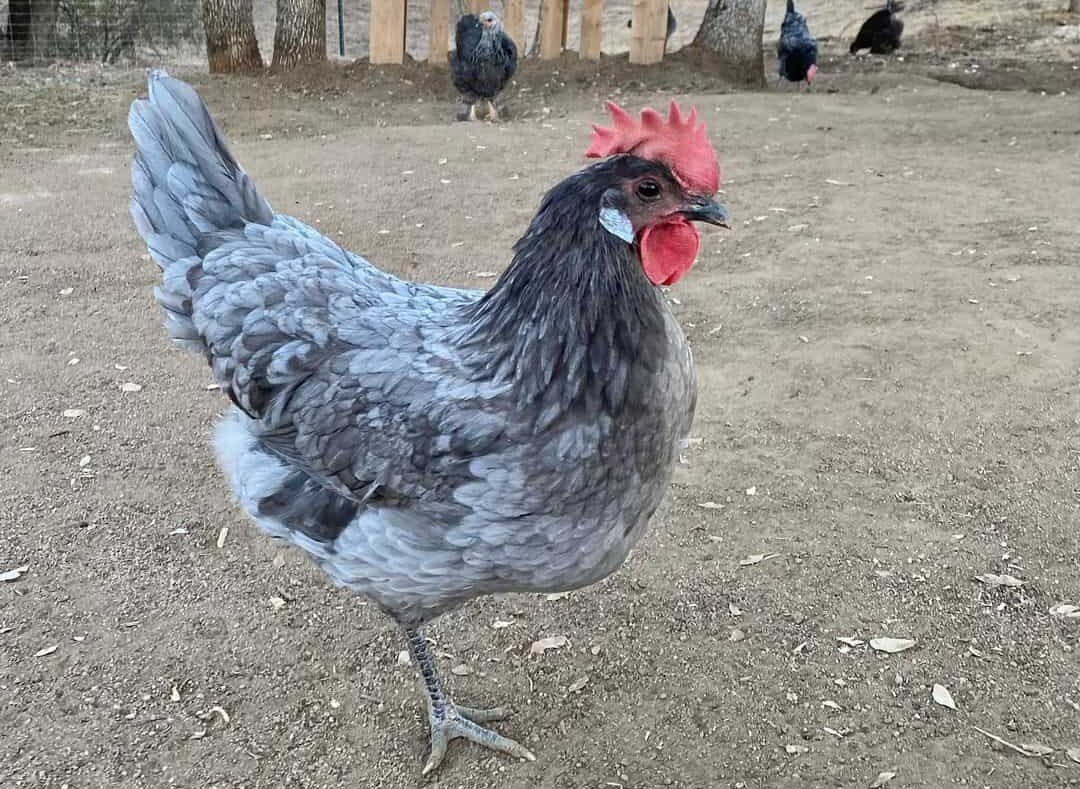
The classic Andalusian chicken is smaller than the Spanish chicken but larger than Leghorn chickens. Overall, it’s closer to Minorcas in size – about 7 lbs for Andalusian males and ~5.5 lbs for females. The feather color of this bird is one of its most distinguishing factors – it’s a beautiful blue color.
Every feather of these blue birds should have a clear bluish slate that can be laced with darker blue or black lacing. Not all birds will have this lacing, however, and some will just have slate blue feathers. In fact, in Spain, laced varieties of the breed are referred to as English Andalusians whereas non-laced birds are called Spanish Andalusians.
The exact hue of the plumage can also vary as some birds have feathers that are mostly white and others – mostly black. The ideal blue feather color is produced by crossing darker blue Andalusian roosters with blue Andalusian hens.
Otherwise, if breeders only cross moderately blue chickens together, there is a 25% chance of black offspring, a 25% chance of white or splash offspring (i.e. white with blueish speckles), and a 50% chance of blue plumage.
As for the rest of this bird’s looks, it’s not dissimilar to other Mediterranean chickens – they have oval-shaped white earlobes, white skin, a tall and upright body type, and black or slate blue legs. the beaks are horn-colored and face downwards, and the single comb five-pointed is bright red in color as are the wattles. Andalusian hens have a medium-sized comb that typically flops to the side.
Andalusian health, egg laying, and temperament
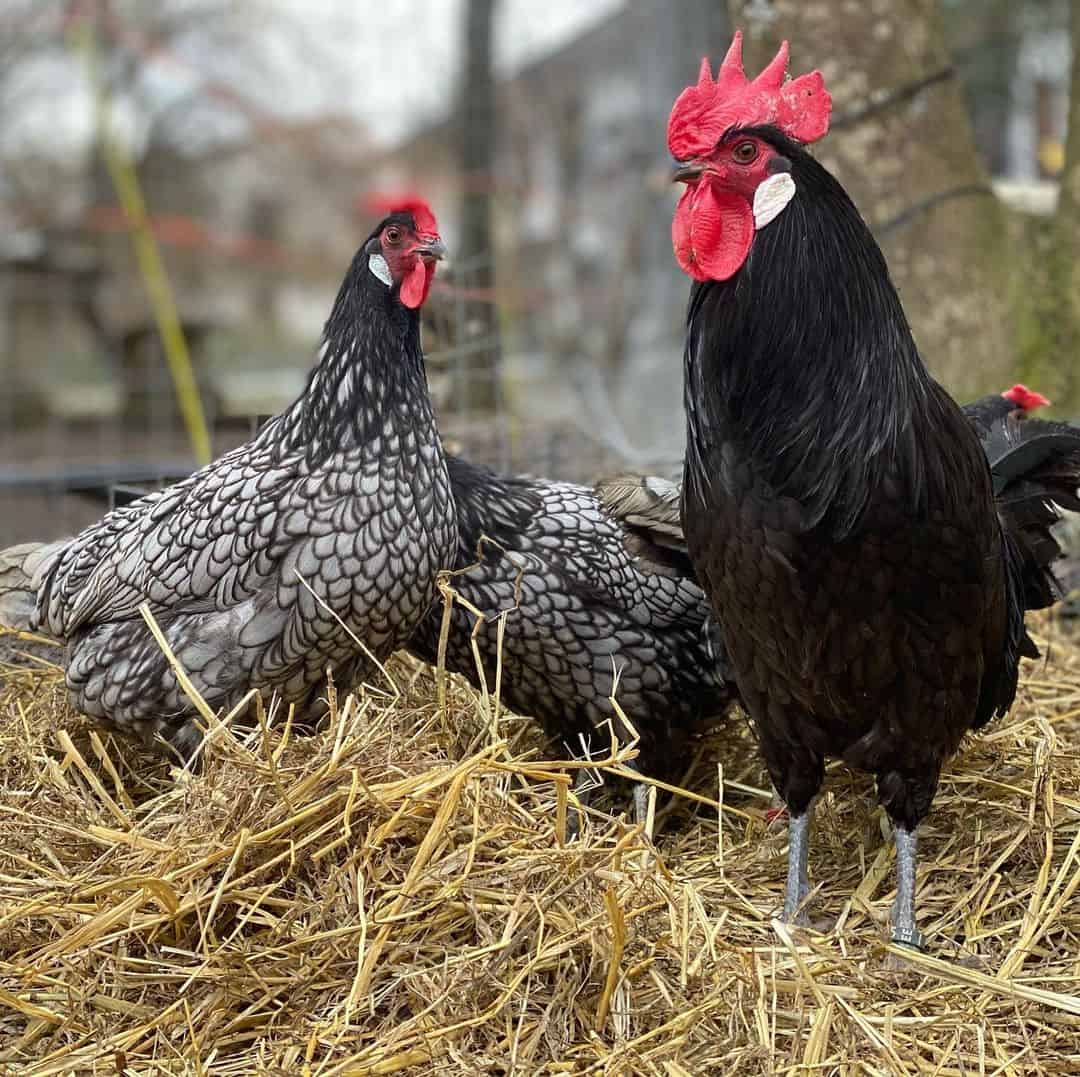
Health
Andalusian chickens are typically seen as hardy and multi-purpose birds and as year-round layers of large white eggs. These poultry birds can live well in most climates and will continue laying eggs even during the winter months if they are cared for properly.
Do keep in mind that these are not cold-resistant chickens, however, and the large combs of the Andalusian male as well as of Andalusian hens can be susceptible to frostbite – these chickens do come from Spain, after all. Aside from that, however, these bluish chickens don’t have any breed-specific health problems you’d need to keep in mind – just the typical issues any chicken breed is susceptible to.
Egg lying
So, if you look after them properly, Andalusian hens will typically lay somewhere between 160 and 200 eggs a year or 3 to 4 eggs per week. This isn’t quite as high as the egg-laying potential of some other “super-laying” breeds, however, it’s still quite impressive, especially given the large size of the eggs. This makes the Andalusian breed quite a good choice for backyard chicken keepers.
Other peculiarities to keep in mind are that Andalusian hens aren’t particularly broody and aren’t all that enthusiastic about hatching their own eggs. This can be great if you have a rooster but you aren’t too interested in breeding young chicks.
On the other hand, if you want some blue Andalusian chicks of your own, you will likely have to use an artificial brooder or a hen from a different breed to hatch the eggs. It’s usually worth it, however, as young Andalusian chicks are incredibly adorable, as you can see in this video.
Temperament
Speaking of different breeds, it’s also important to note that the Andalusian chickens can be a bit overly competitive with other birds. Essentially, they always look to be at the top of the pecking order, even if the other chickens around them are larger.
This means that Andalusians have a tendency to be bullies with other birds which is key to remember especially if you want to get new birds later. Still, don’t take this to mean that Andalusian chickens absolutely can’t live with other breeds – they can, as seen here – they just usually need an experienced chicken keeper to manage their flock.
On the bright side, Andalusians are very good foragers and live especially well when free-ranged or at least when they have a large chicken run available. This helps them acquire lots of extra protein from the environment around them and it can even cut down on your budget for food and treats. This also makes them a great pest control tool, especially if the chicken run or free range goes well around your property.
Not only do Andalusian chickens love free-ranging but they also need it. These birds don’t tolerate small enclosures for prolonged periods of time nearly as well as some other breeds. In other words, if you know you won’t be able to provide your chickens with enough open space to explore for large portions of the day, then this breed may not be the ideal choice for you.
As for interactions with other animals, pets, and people – the Andalusian chicken can be friendly and social, as long as it isn’t mishandled. These birds can easily live with other farm animals or pet dogs and kids, however, they don’t like being held or picked up. So, if you do have kids, they should know how to interact with the Andalusian chickens and what are these birds’ Dos and Don’ts.
In conclusion – is the Andalusian chicken the right breed for you?
All of the above factors taken together mean that the Andalusian breed is great for backyard keepers in warmer climates who want a beautiful dual-purpose bird and who have enough space for it to thrive in.
These chickens aren’t ideal for people who want or need to keep their birds in a small coop for most of the day, however, nor are they great for people in colder climates. If you want to look after a mixed flock or if you like breeding and crossing your birds, the Andalusian can also present some challenges.
All this explains why this isn’t a particularly common poultry bird but it doesn’t detract from the sheer beauty of these birds nor does it make them a bad choice for you, as long as you can give them the environment they need.

